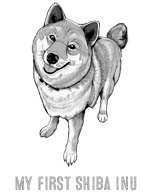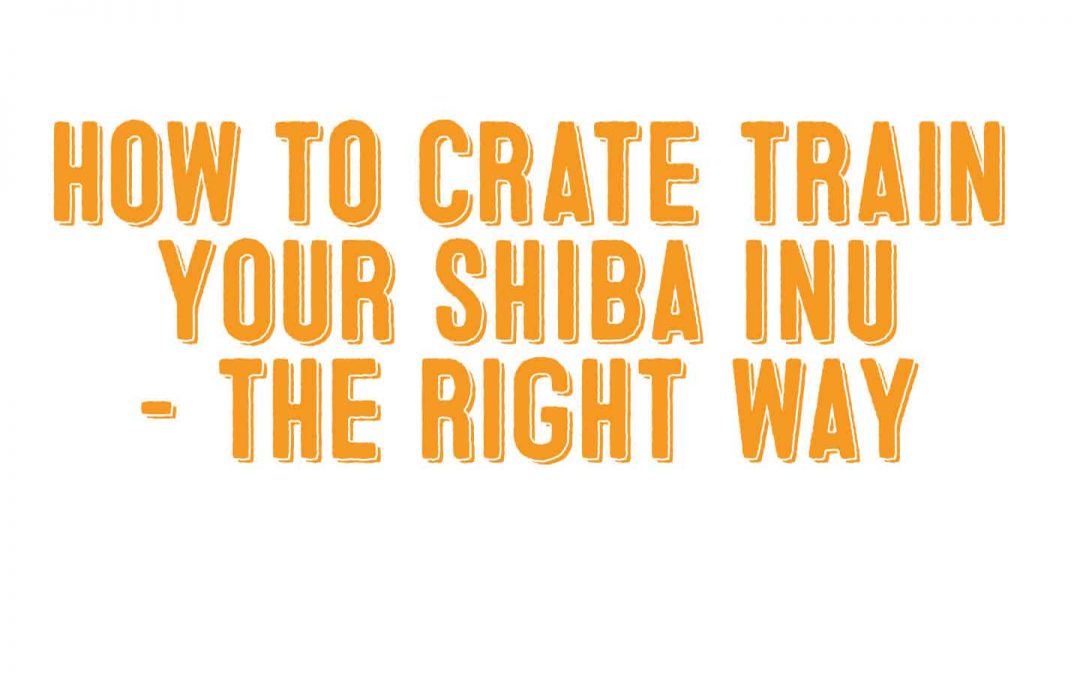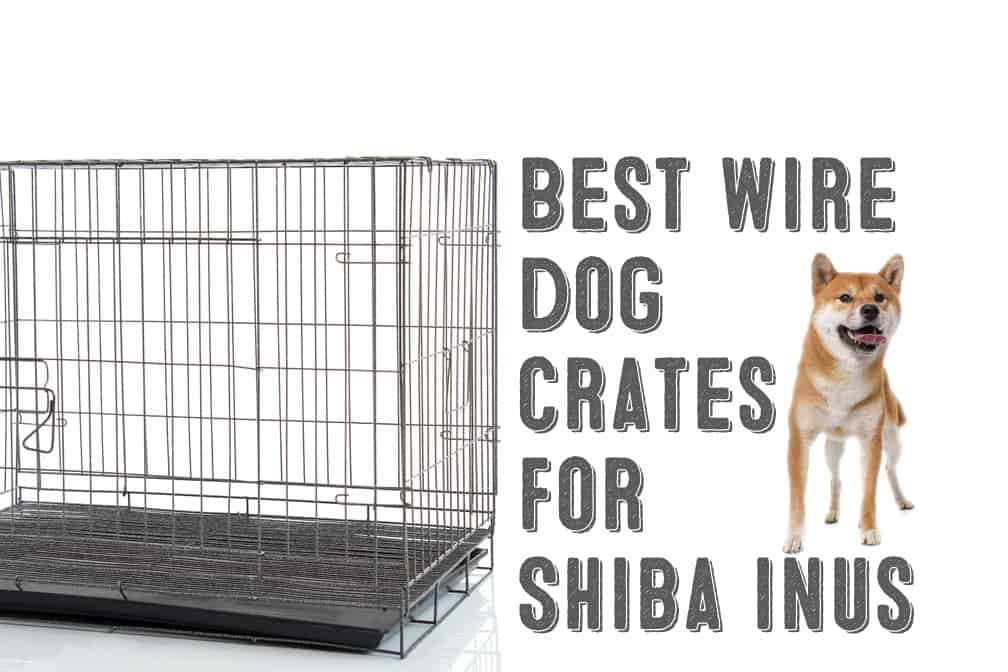On occasion, our posts contain affiliate links. However, we only recommend products that we truly believe in. For more information, visit my privacy policy page.
Is Crate Training a Shiba Inu a Good Idea?
Some Shiba Inu owners may feel apprehensive about putting their Shiba into a crate.
But, don't fret. Crate training is the most effective way to ensure your dog stays safe when left unsupervised for short periods. (Never leave a dog in a crate all day while you work - crates are a tool and not a substitute for responsible dog parenting.)
Basically crate training is all about management. When you can manage your Shibas effectively, you can reduce the likelihood of stressful and potentially dangerous situations in the future.
Shiba (especially puppies) can get into serious trouble when left alone. Not only does that put your furniture and personal belongings at risk, but it also puts your Shiba's life in danger.
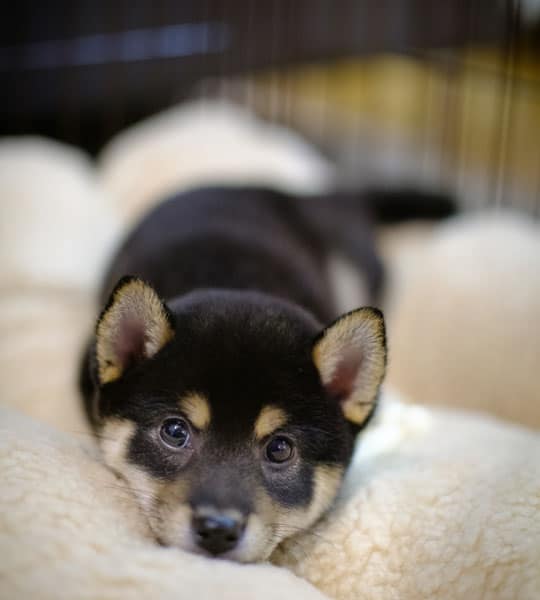
Dogs can chew electrical cords, choke on small items, or eat something their digestive tracts cannot handle.
Crate training gives owners peace of mind knowing their dog won't hurt him or herself when left home alone for short periods of time. Crate training is not a punishment.
It's a responsible way to raise a puppy.
When introduced as a puppy correctly, your Shiba Inu will soon enjoy using the crate as a place of solitude, sleep, and relaxation.
Best Practices For Crate Training Your Shiba
Shiba Inus have a reputation for being somewhat difficult to train at times.
But this is because they respond best to activities that make sense to them.
Shiba Inus are a unique breed that require specialized training approaches.
Keep that in mind as you crate train your Shiba.
Consider Your Shiba's Age When Training
Age plays a key role in successfully training a Shiba Inu.
Crate training a Shiba Inu puppy might go smoother than crate training an adult. But it's not impossible to train a full-grown Shiba Inu.
Owners just have to be careful to move through the training at each individual dog's pace.
Older Shibas may take more time to adjust to the crate, while puppies adapt quickly.
Give your Shiba Inu the time it needs to get used to the crate without making them feel overwhelmed.
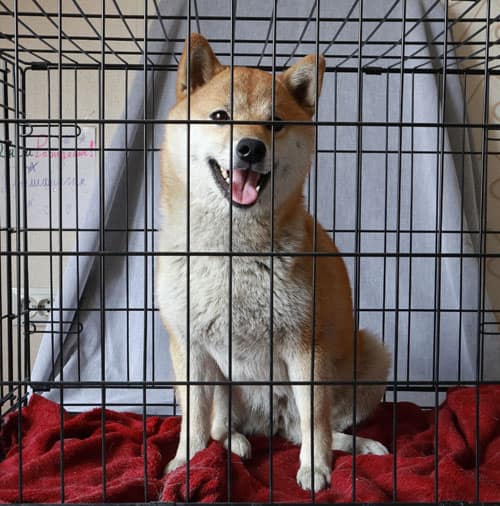
Pick The Correct Crate Size
Select a crate that is large enough for your Shiba Inu to stand up and turn around in.
Don't give your Shiba Inu puppy a crate that is too big, or the pup may turn the extra space into a bathroom
A good rule of thumb is to use a crate that is between two and four inches of your Shiba Inu's length, width, and height.
A size 200 airline crate should accommodate most Shibas for their entire life.
They also easily fit in the backseat of vehicles
Prepare a Cozy Crate
Shiba Inus need to feel comfortable and secure in order to be trained.
Before introducing the crate, transform it into a cozy and relaxing den. Try adding:
- Blankets or a dog bed
- Dog-friendly toys or chewing bones
- Water and food bowl
- Pee pads (for Shiba Inu puppies who are not yet house-trained)
- Crate cover (optional but great idea)
In addition to adding cozy elements to the crate, be sure to also keep the crate clean. Regularly replace pee pads, add fresh water, and wash the blankets.
Letting your dog's den become filthy is unhygienic. It can also make the crate feel like a punishment

Make The Crate a Positive Space
Don't ever use the crate as punishment. Your Shiba Inu will fear the crate and may refuse to go into it.
Make sure your Shiba is in a good mood. Never attempt any kind of training when your Shiba is upset, anxious, or hyped up.
Put the crate in a common area of the home, such as the family room. Let your Shiba Inu get familiar with it.
Since they are naturally curious dogs, your Shiba will want to sniff and examine the new object.
While your dog explores, make sure the crate door stays open so your pup doesn't accidentally get locked in.
Encourage your dog as it sniffs the crate.
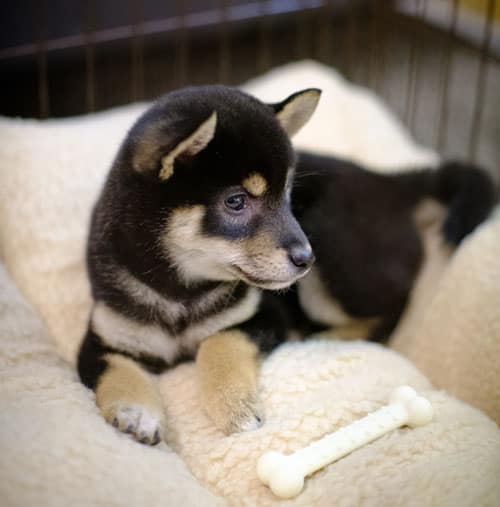
Speak in a positive and cheerful voice. Say "goooood dog" as your Shiba Inu continues exploring. Kneel beside the crate and reassure your pup that there is nothing to be afraid of.
If your pup is hesitant, try playing near the crate. Throw a toy around the crate. Slowly throw the toy closer to the crate. If your pup is responding, toss the toy into the crate for your Shiba Inu to retrieve as you continue to cheer and praise.
Remember, keep it happy, happy, happy!
Reinforce Training With Delicious Treats
Once your Shiba Inu is comfortable with the new object, introduce food to the crate. Make sure it's tasty.
Start by placing a few treats in your hand or pocket.
Ask your Shiba Inu to do something they know how to do (like sit, shake, or lie down), and reward them with a treat.
Next, hold a treat and slowly move your hand towards the crate. Have your Shiba Inu sit near the crate, then give them the treat. As you keep doing this, move closer to the crate.
Eventually, get your Shiba Inu to go inside the crate. The treats will allow your pup to get used to going in and out of the crate.
Start Closing The Crate Occasionally
When your Shiba Inu seems comfortable going in out of the crate, get them accustomed to staying in the crate.
Use treats to guide your pup into the crate. Then try to get your Shiba to relax, lie down, etc. If your Shiba is already trained with the "stay" command - use it now. Slowly close the door, but do not lock it.
It's okay if your Shiba Inu presses against the door and opens it. You want them to understand the cage is not a trap or punishment.
Gradually, as your Shiba Inu gets more comfortable being inside the crate, start locking the door. Give your pup a few treats and lots of joyous praise to express your approval at their obedience.
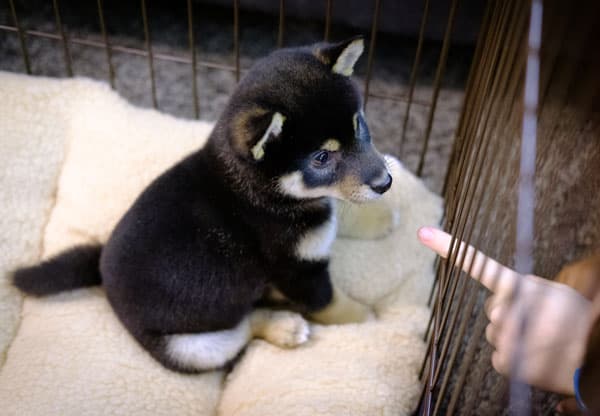
The first time you lock the door, only keep the pup inside for a few minutes. Add on a few extra minutes every time you use the crate.
Gradually increase time in the time in the crate over multiple training sessions. Don't try to rush this as any small setback will further delay progress.
If your pup is whining, reassure your Shiba in a soothing voice. If the whining continues without easing, take out your pup and end the session. Go back and perform extra open door training next time.
Always try to end training with a success full stay in the crate of at least a few minutes.
Carry On
Hope this article has given you a good understanding on the steps to successful crate training.
Remember if taught correctly, this is not hurtful or harmful to your Shiba.
In the long term having your Shiba crate trained will save you a lot of time and stress in the future. You'll always have a safe space for your Shiba to rest when you can't be around to supervise - especially in unplanned situations.
Be sure to check out our other posts on Shiba Inu training when you get a chance.
Thanks for visiting Myfirstshiba.com! We do our very best in providing our readers with awesome content about our beloved Shiba Inu breed. Some of our articles include reviews and recommendations to our favorite products. We do occasionally earn commissions from certain affiliate links that help support our work and mission. Thanks again for visiting. Shiba Kisses To All!
